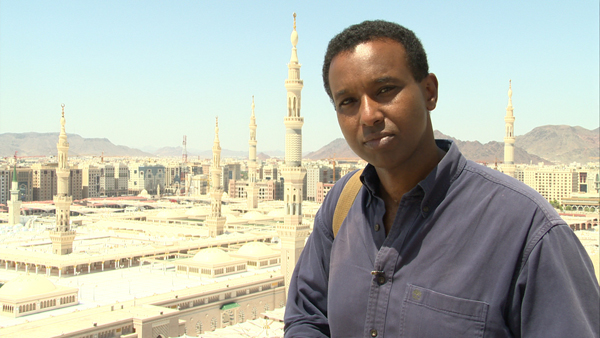Review: Life of Muhammad
New PBS Miniseries Provides a Glance at the Prophet

As I kicked back in my humble American bungalow, pictures of modern Arabia peppered the television screen; images of immaculate mosques surrounded by dusty homes, desert planes under a beaming sun, and a sea of white robes, indistinguishable of race or gender, in pilgrimage to the holy city of Islam. While these images transported me to a distant land, they didn’t fully capture the main character of PBS’s new three-part series, Life of Muhammad. After all, the Prophet Muhammad was born into an Arabia that was just a shadow of its modern version. The luxury of the present is unlike the brutish pre-Islamic landscape. While these images add clarity to an often overlooked assumption that the East is different than the West, applying a Western lens in understanding the East is much like wearing far-sighted glasses when you are nearsighted; things just look blurry.
Perhaps this is why the three-part documentary series starts each episode with a quest to “uncover the real Muhammad.” How many of us can attest to really knowing the life of a man who has forever changed the scope of history, a man who has been ranked as the number one most influential person in history; a man who’s held in the very high esteem of at least 1.6 billion people, who, unfortunately, may only be known to us from Western perspectives of Danish cartoons and homemade YouTube videos? If you wish to understand the “real Muhammad,” then PBS’s miniseries is a great place to start.
Life of Muhammad is structured in three, one-hour documentary episodes. The first two installments show the Prophet Muhammad’s struggle and persecution. The last episode reveals his role as a leader and statesmen over one of the fastest growing nations. This structure aligns itself with the two names of the Prophet: “Muhammad,” signifying his character during his struggles, and “Ahmad” to signify his character when he was victorious. Since Muslims view Prophet Muhammad’s life as a model for all of mankind, understanding his behavior during the highs and the lows provides an example for how to conduct oneself during life’s peaks and troughs.
The episode themselves walk us through the Prophet’s life, with narration by journalist Rageh Omaar. The documentary points out that unlike the Christians’ view of Jesus, Muslims view Muhammad as a mortal man. Born without a father, it’s said he watched his mother pass away at a young age, and then witnessed the passing of his grandfather. “Arabia was a cruel place to live,” Omaar relates. “It was a time where death was the punishment for stealing a piece of bread.” Regardless of such a toilsome upbringing in harsh conditions, the Prophet became a successful tradesman under the guardianship of his uncle, Abu Talib. In fact, the Prophet Muhammad became known as “Al-Amin” (the “trustworthy”) among his contemporaries.
But besides outlining the various events of the Prophet’s life, Life of Muhammad provides its own commentary on contemporary controversial issues. For example, Omaar attests that the modern term of “Jihadis” would be unknown to Prophet Muhammad. The documentary provides a balanced analysis on these issues from Islamic scholars such as Tariq Ramadan to anti-Islam critics such as Robert Spencer. Their commentary, however, can leave the viewer feeling caught in the middle of a never-ending debate.
Though it may be disorienting, this style also allows the viewer to draw their own conclusions. Regardless of the ping-pong arguments, the facts still reveal Prophet Muhammad to be a man filled with much wisdom and compassion. Who can say that he spread Islam by the sword when the most epic battle in the history of Islam, the recovery of Mecca, was done without raising a blade? Who cares about swords — Prophet Muhammad even forgave his most bitter of enemies when he easily could have executed them all during the recovery of Mecca. He was a selfless man. As Mirza Tahir Ahmad has said, “Swords can win territories but not hearts; forces can bend heads but not minds.”
Of course, the grand modern mosques of today do not capture the purity of early Islam. (The Prophet’s mosque was actually a small, open-roofed mud house.) And the religious intolerance of today’s Muslim countries makes it difficult to reconcile Prophet Muhammad’s invitations to Christians to pray in his mosque. While an undoubtedly Western lens makes for an unfortunately blurred vision of Prophet Muhammad, more often than not the lens of the East fails to recognize the true wisdom of their holy founder. As far as the “real Muhammad,” PBS’s documentary provides a fraction of a perspective and leaves the rest up to us.



